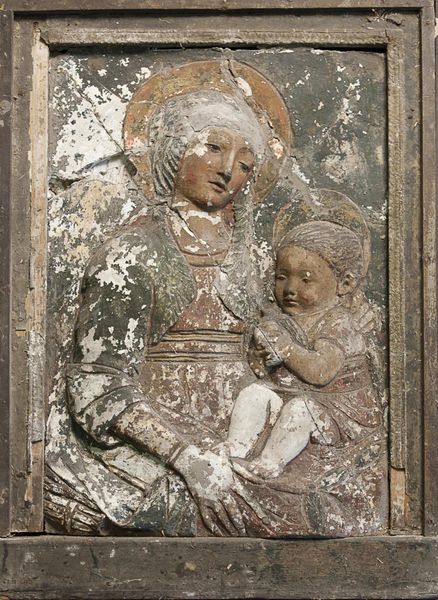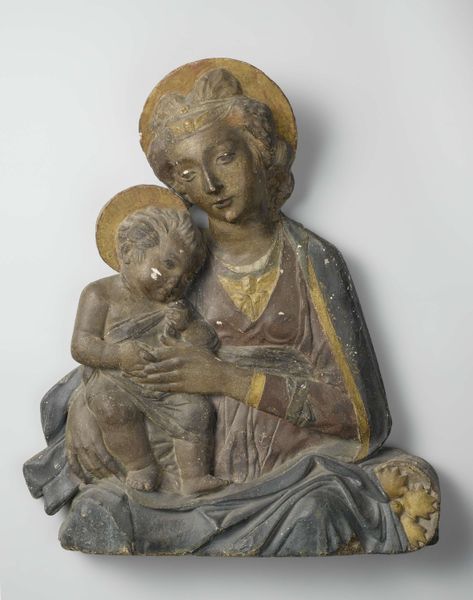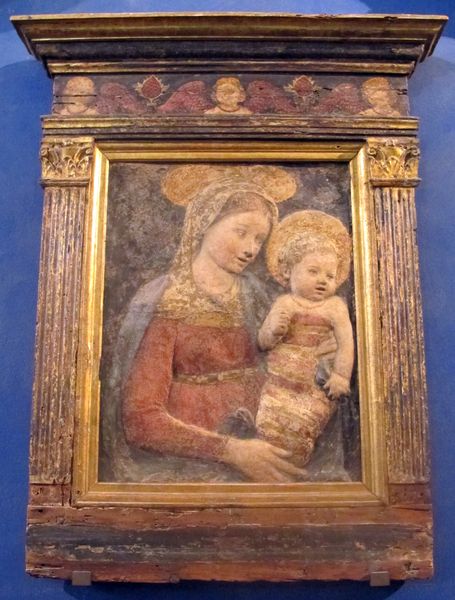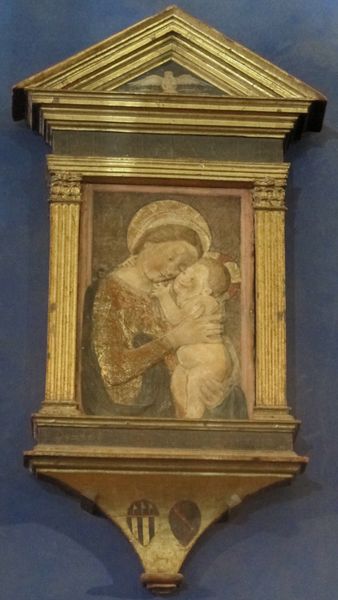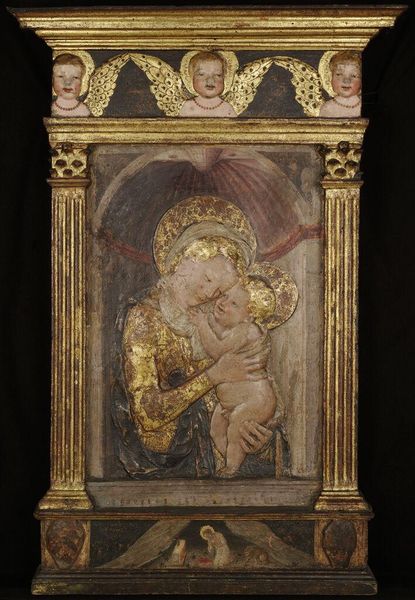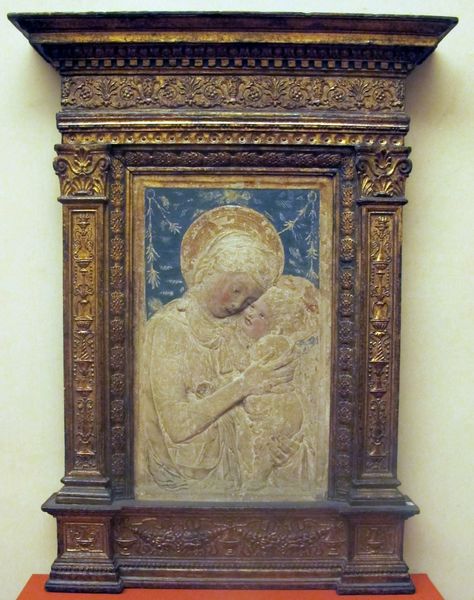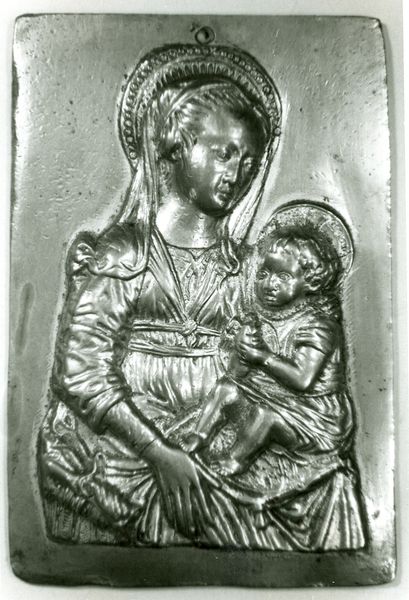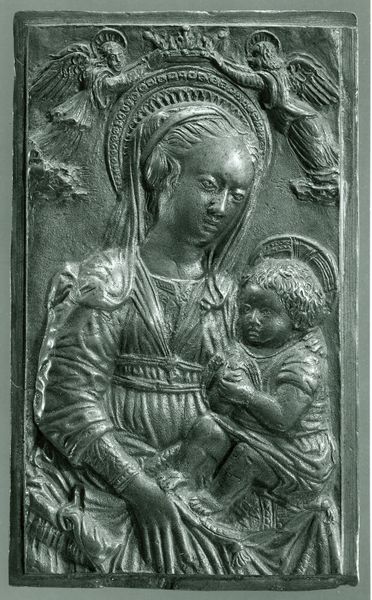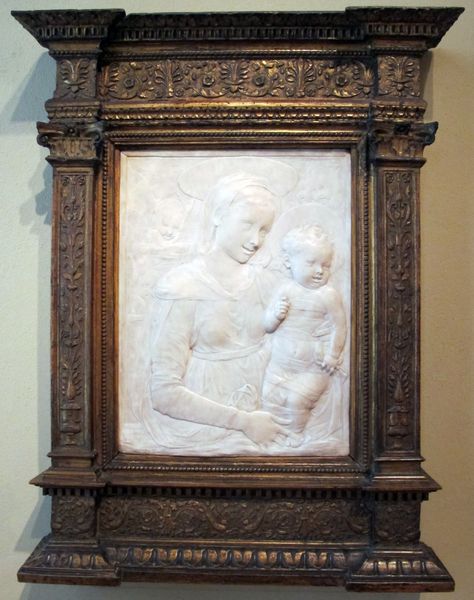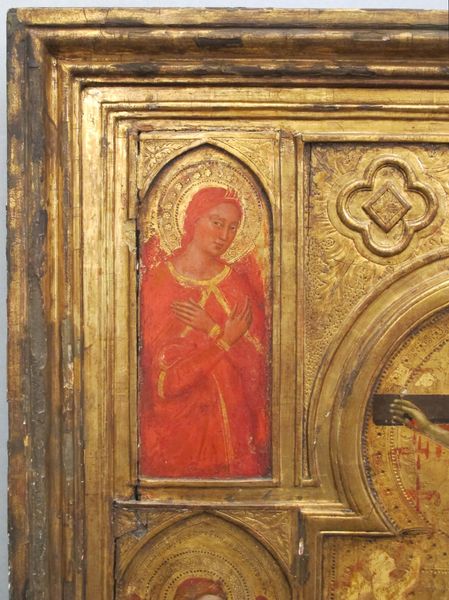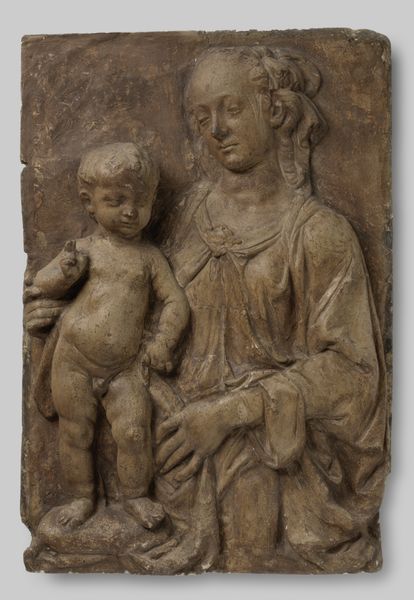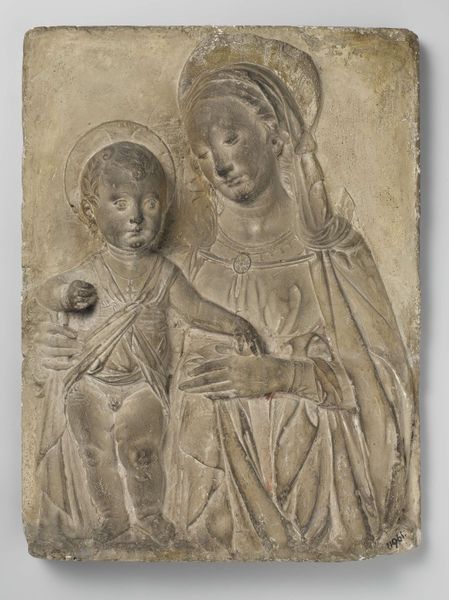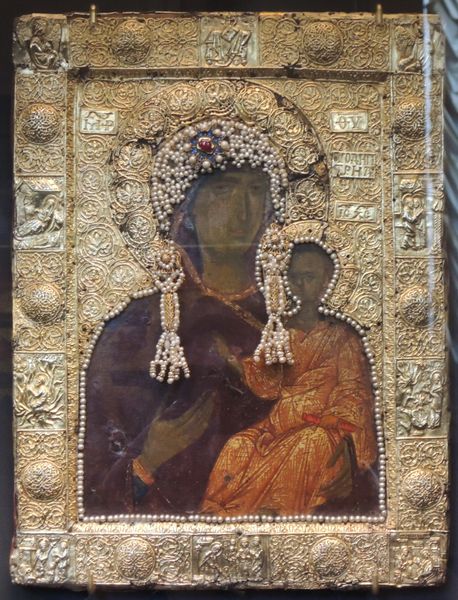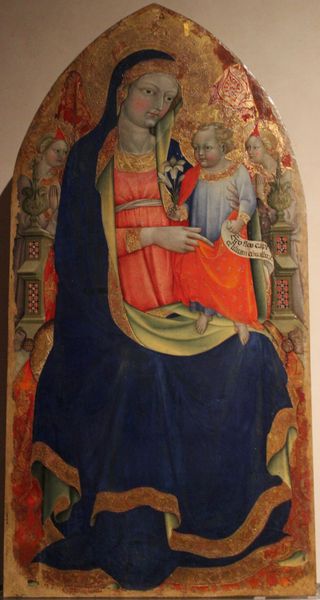
relief, sculpture, marble
#
portrait
#
sculpture
#
relief
#
figuration
#
11_renaissance
#
madonna
#
sculpture
#
marble
#
italian-renaissance
Copyright: Public domain
Editor: Here we have what's called "Madonna Col Bambino" by Desiderio da Settignano, a marble relief sculpture from the Renaissance. The expressions seem very tender. How does a work like this reflect its time period, Professor? Curator: That tenderness you notice is key. This image serves specific devotional purposes in the 15th century. Marble reliefs of the Madonna and Child were not just art; they were commodities purchased for private devotion, particularly in homes. We should ask, how did they function in the domestic sphere? Editor: So it's less about a grand statement, and more about personal piety? Curator: Precisely. While large altarpieces were undeniably powerful public statements, pieces like this offered a more intimate, domestic connection to the divine. The scale makes it relatable. Think about the rising merchant class, eager to display both wealth and religious devotion within their own homes. Does that alter how you see its artistic intent? Editor: Definitely! I initially looked at it as purely aesthetic, but now I'm seeing it as a symbol of status and personal faith. The placement within the home creates a different kind of viewing experience entirely. Curator: Consider too how the marble relief format would have allowed for mass production by workshop assistants, creating a relatively affordable luxury. These Madonnas became part of a burgeoning visual culture, influencing ideas about motherhood and the Holy Family. Editor: Wow, that puts it in a completely new light! I never would have considered the social implications of owning a piece like this. Curator: Art is always entangled within its social and economic context. Considering these forces unveils so much more beyond aesthetics. Editor: Thanks, Professor, that completely transformed my understanding! I am so happy to have had this little tour of how these things were not just objects of beauty, but pieces of a bigger story of status, religion and capitalism.
Comments
No comments
Be the first to comment and join the conversation on the ultimate creative platform.
